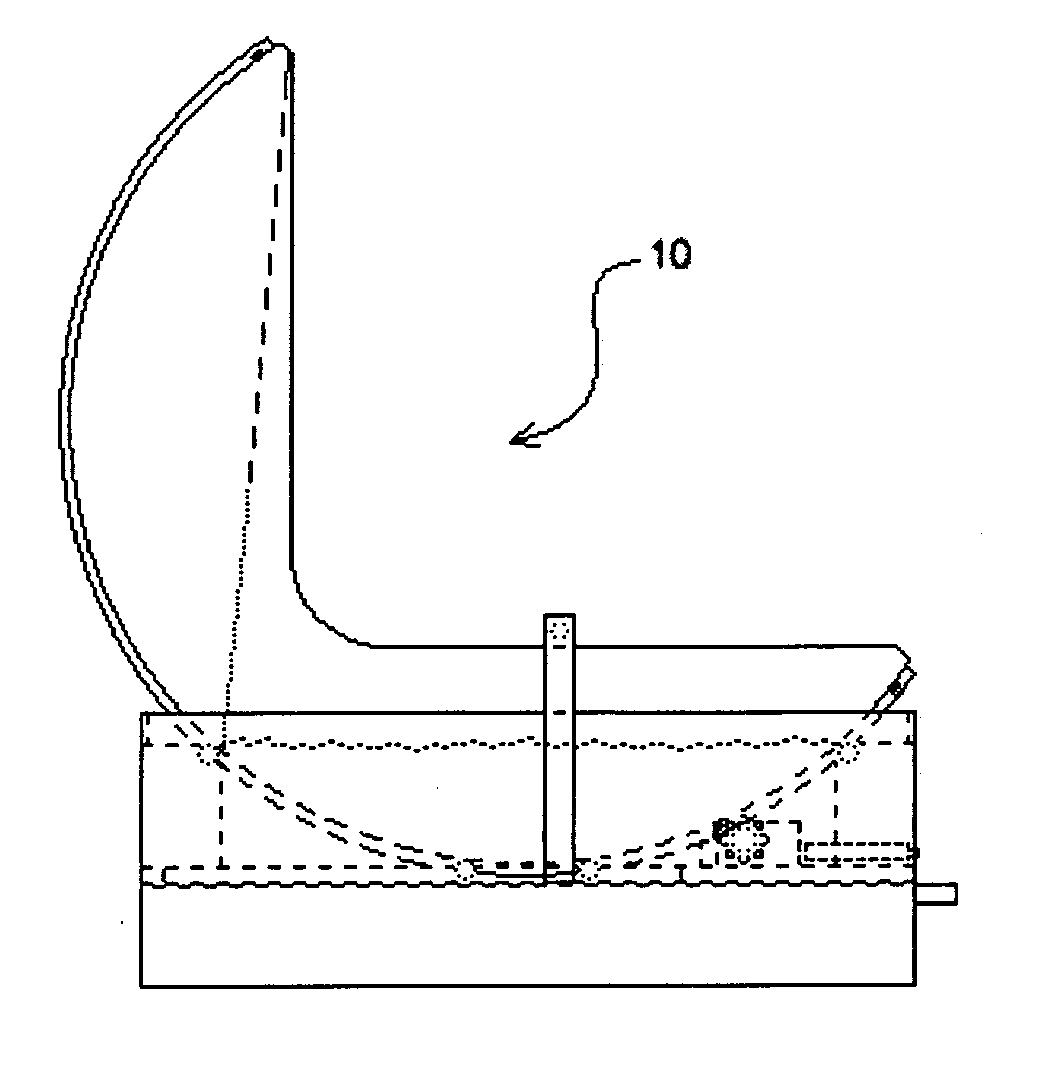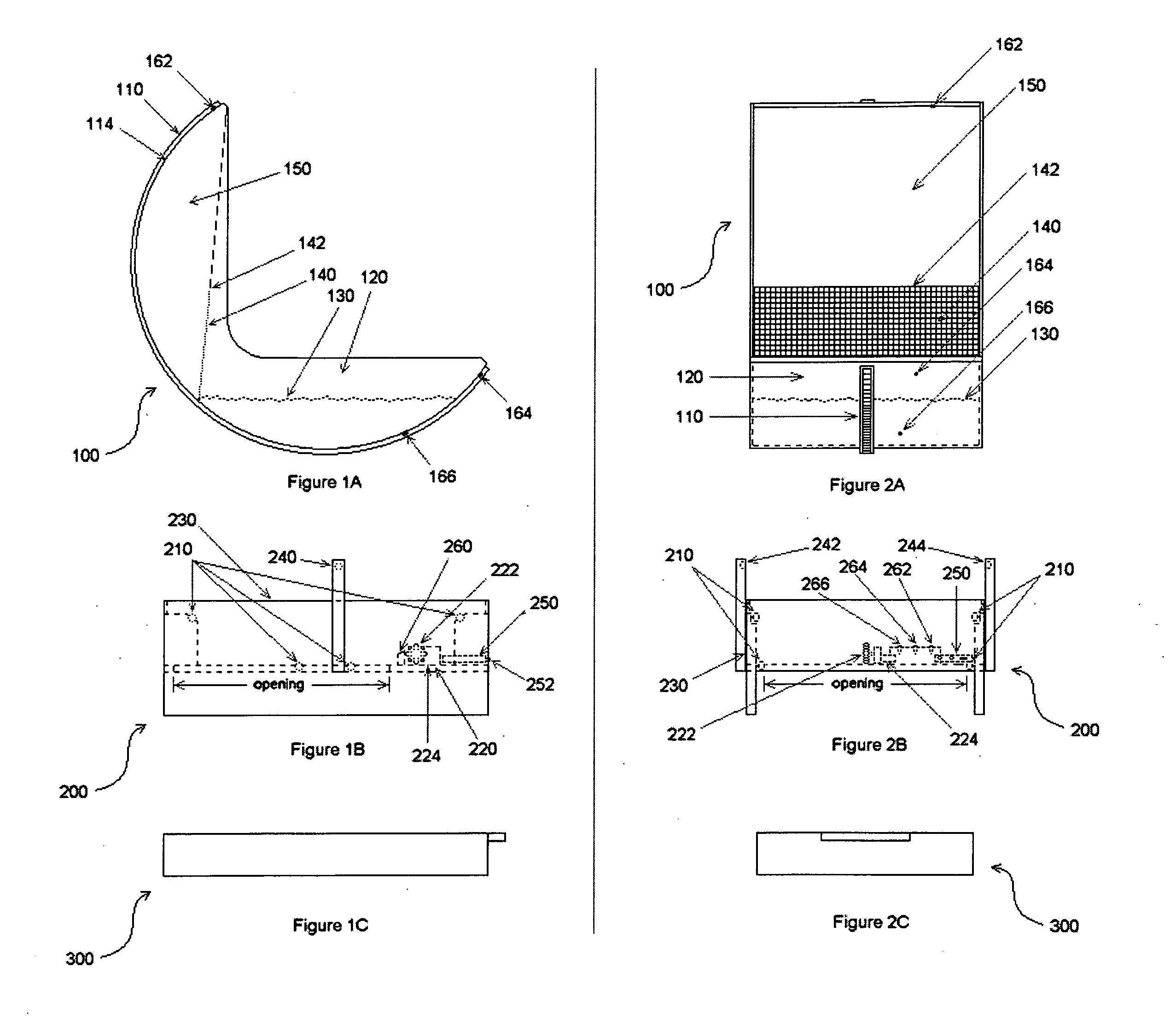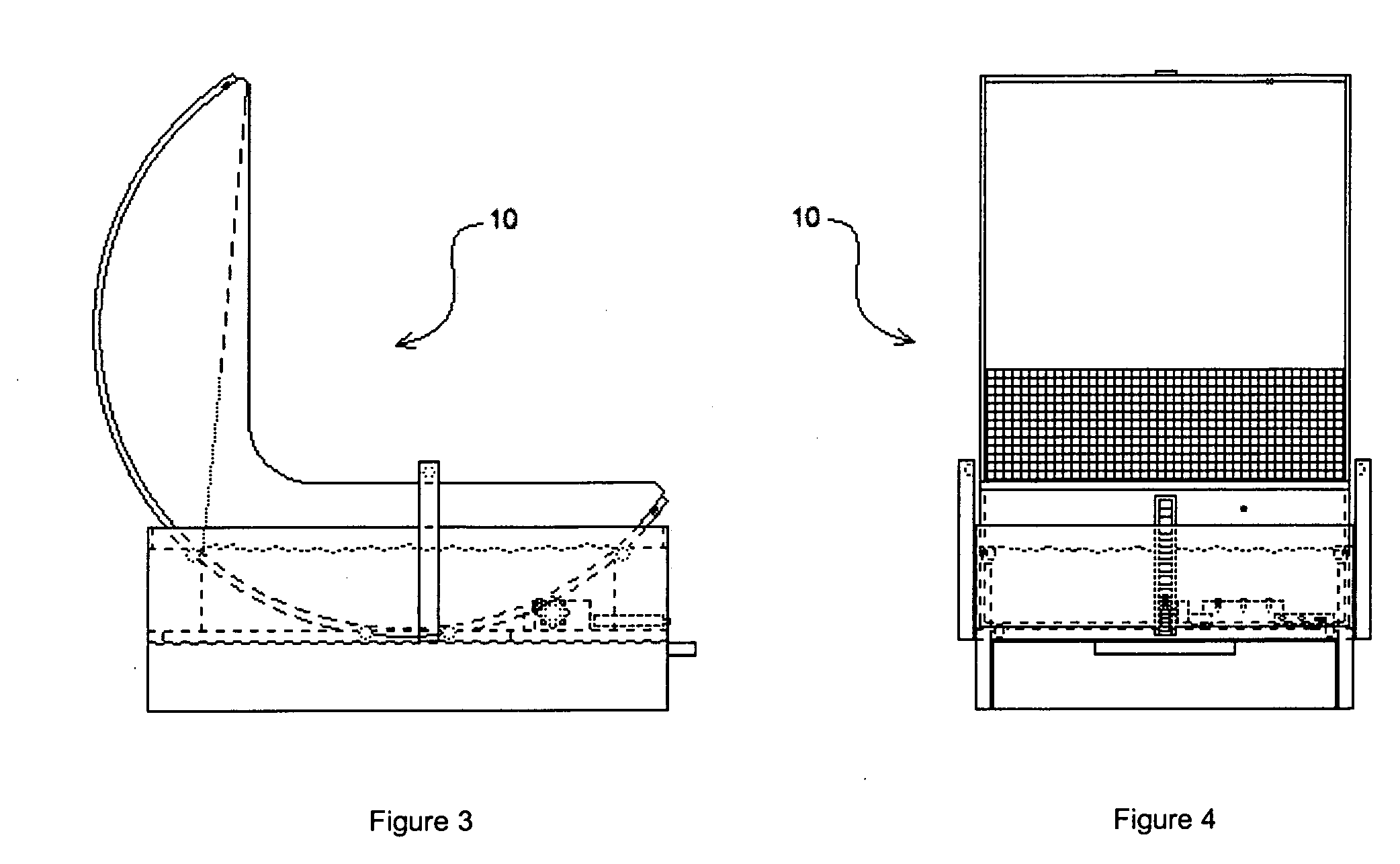The major flaw with the raking method is that a motor forces not only the rake through litter, but also the
solid waste material though the litter as well.
Although the rake can be made in such a way to travel relatively easily through litter, the unpredictable shapes and generally large surface area of
solid waste makes it difficult to force waste clumps through such a dense and heavy material such as clay litter.
The typical behavior of cats to bury their clumps makes this process even more difficult.
There are often many undesirable effects with using such a raking method.
One such effect is that clumps and other
solid material can be wedged between the rack and the bottom of the litter pan, which can cause a smearing effect.
The gradual build-up of such debris makes subsequent raking phases more and more difficult.
In this
scenario, gravity is actually hindering the filtering process.
The options for which direction the litter can move are reduced, and further smearing can occur, and the increased force on the debris can further force the debris into the tines of the rake, clogging the rake.
This makes it extremely difficult for the rake to filter the unevenly covered litter pan.
Because of these problems, there is usually a
narrow range at which the litter must be maintained.
To high a level, and the force required to push the rake and the debris through the litter is too great for the device to
handle.
Aside from a clogged rake making the
litter box ineffective, it also increases stress on the mechanical parts, motor, and
power consumption.
It is also extremely difficult to unclog the rake, as well as being an extremely undesirable task to take on.
U.S. Pat. No. 6,851,386 tries to address this problem by introducing a rake that is less susceptible to clogging; however the raking method itself cannot change the force of gravity working against the debris or the
mass of the clay.
This results in an incomplete cleaning process.
Being an enclosed litter box, this product does have the
advantage of making it far more difficult for the cat to throw litter outside of the litter box; however there are also significant disadvantages as well.
Secondly, this product must have ports in the globe that open to let waste exit the globe and fall into the waste receptacle.
These ports limit the size of the clumps that can fit through these the ports, preventing the use of the device for cats that create large clumps; this particularly true for cats with diabetes, as the clumps will not fit through the ports.
Thirdly, it is relatively difficult to introduce fresh litter into the globe as well as clean the globe (which is recommended to be done periodically).
A cat less than 5 lbs. will not weigh enough to trigger the sensor, and cats over 15 lbs. will have trouble fitting into the globe.
This has the significant
advantage of using the sifting method while still providing a traditional open litter box that's attractive to the largest
population of cats; however this mechanism has multiple disadvantages, the first of which is that the device would have to be very large in order to create a litter area large enough for a typical feline to use effectively.
The second
disadvantage is that the mechanism is not automated, and would be difficult to automate.
The third
disadvantage is that it is would be very difficult to level the litter without picking up the entire litter box and shaking it around.
A litter box is only effective if the cat will use the device, and because many cats will simply not uses enclosed litter boxes, a perfectly designed enclosed
system will not do the job if the cat does not elect to use it.
For those cats that will not use an enclosed device, the alternative is that the cat will either use an unenclosed litter box if available, or an undesirable location if not available.
This makes it even more difficult to get the value out of a potentially expensive enclosed litter box device if a pet owner has multiple cats.
However, because many cats that would otherwise use the enclosed device if that were their only option will often use the unenclosed device when given the choice, the effectiveness of the enclosed device is further reduced, as it gets used even less frequently than expected by the cat owner.
The challenge is thus to create an automated litter box that has superior filtering capabilities by utilizing the sifting method, and yet has an
open design to encourage use by as many household pets as possible.
 Login to View More
Login to View More  Login to View More
Login to View More 


